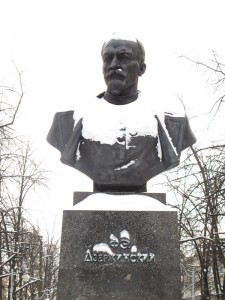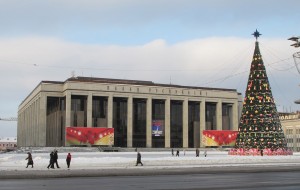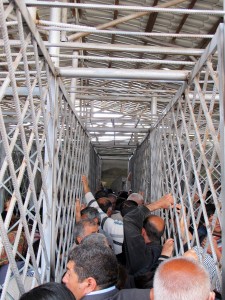
The Caged Queue
The Astara border crossing from Azerbaijan to Iran turned out to be a bit of a zoo.
The border crossing is very slow, and to maintain order the Azeri authorities have created a special queuing area with four distinct queues separated by cage-like walls. Every 30-40 minutes the authorities would open the steel door for one of the queues and let 20-30 people into the main immigration area. Each queue might only move every couple of hours.
Ahh, but the Azeris do not like to queue. Especially not for 4+ hours. So when a door opened some people in adjacent queues would frantically climb up through the roof and try to force their way down into the moving queue. And as the authorities tried to reclose the steel door, people would frantically try to force their way through anyway, sometimes using planks of wood to try to reopen the door!
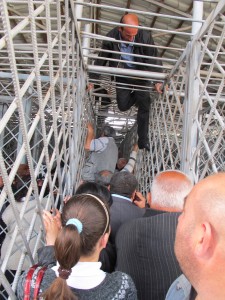
Queue Jumping
I arrived at 8:15am. There were already several hundred people queued. By 11:45 I was still stuck in line and I climbed up and traversed out for a bathroom break. But of course, at that very moment our steel door opened, my queue started to move, and I had to frantically start climbing back in. Luckily people saw that I was just reclaiming my earlier place and made it easy for me, which was nice of them.
But woops, I was spotted by the authorities. You! I was waved angrily to the head of the line. I don’t speak Azeri, but the gist seemed to be a rather annoyed “You’re a foreigner!” I was ushered through into the immigration area and then ushered to the front of the inner queue. I felt simultaneously guilty for queue jumping and also slightly silly for not having played the “foreign tourist” card earlier.
I was quickly processed through Azeri immigration, with only a short discussion of British football teams. But the Iranian side was more interesting.
I was stamped into Iran fairly quickly. But then after a short pause, I was escorted upstairs to the immigration police headquarters. Where everyone was very nice, but my papers were very carefully checked. The chief himself reviewed all of my many passport stamps, no doubt looking for the dreaded I*****i stamp. He exclaimed in mild amusement when he finally deciphered “Paraguay” and the mood got a little lighter. Eventually he was done, everyone seemed happy, and I was handed off to a soldier with a rifle, apparently to show me out. Ah, but not quite.
The soldier escorted me out of immigration. And then into town. And then towards the local police station. And then into an interview room. Woops. But everyone seemed pretty relaxed and the police merely rechecked my passport and asked the usual “where are you from” kind of questions. And then I was carefully fingerprinted. This was probably the main reason for my visit to the police station: UK immigration fingerprints Iranians, so Iran is determined to return the favour.
After fingerprinting, I was led out to wash my hands and then waved onwards. Amidst the enthusiasm to check my passport and fingerprints, I had somehow bypassed customs, so we were all done. Hurrah!
After all that, I splurged on a taxi to Ardabil, and then took a bus on to Tabriz.
Practicalities: I think my timing (8:15am on a Saturday) was especially bad. I arrived after the locals had already mostly joined the queue, and very few people were joining behind me. By the time I finally got through, there was only a fairly short queue behind me. If I had arrived at (say) 2:00pm I might have had only a fairly short wait. Also, I should probably have played the “foreign tourist” card earlier. There seems to be an area to the left (East) of the caged queue where some officials were housed and maybe I could have talked my way through there.
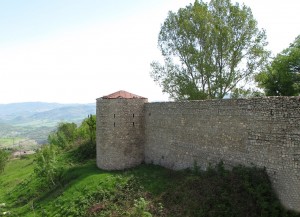 I took a marshrutka out from Stepanakert to the old scenic town of Shushi.
I took a marshrutka out from Stepanakert to the old scenic town of Shushi.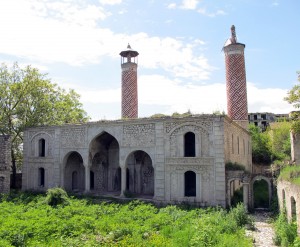 After some searching, I found my way to the remains of the old mosque. In an elegant theological touch, it’s two minaret towers have the Arabic letters for “Allah” repeated in white-on-red stripes ascending up towards heaven. The mosque interior is gutted and the courtyard is overgrown with weeds.
After some searching, I found my way to the remains of the old mosque. In an elegant theological touch, it’s two minaret towers have the Arabic letters for “Allah” repeated in white-on-red stripes ascending up towards heaven. The mosque interior is gutted and the courtyard is overgrown with weeds.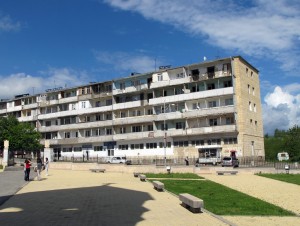
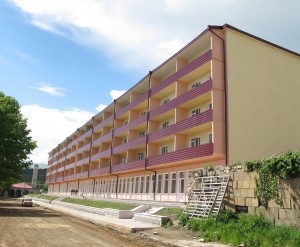
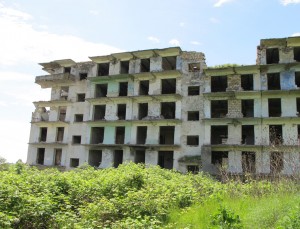
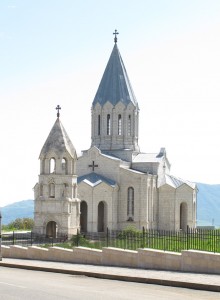
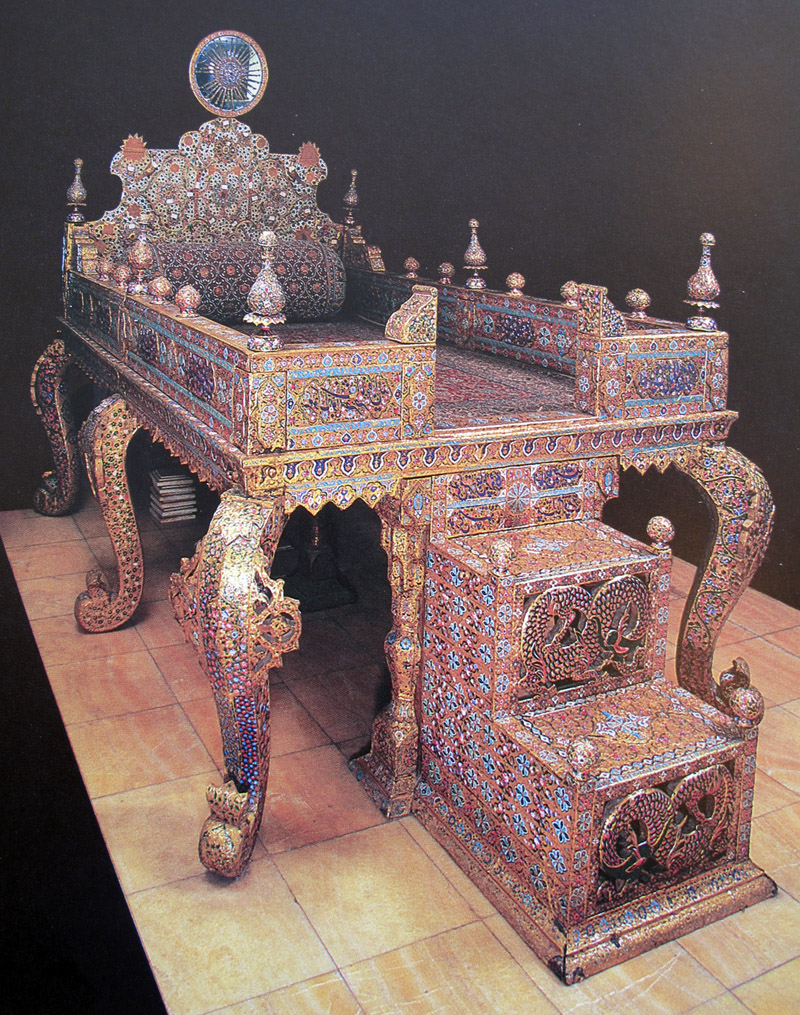

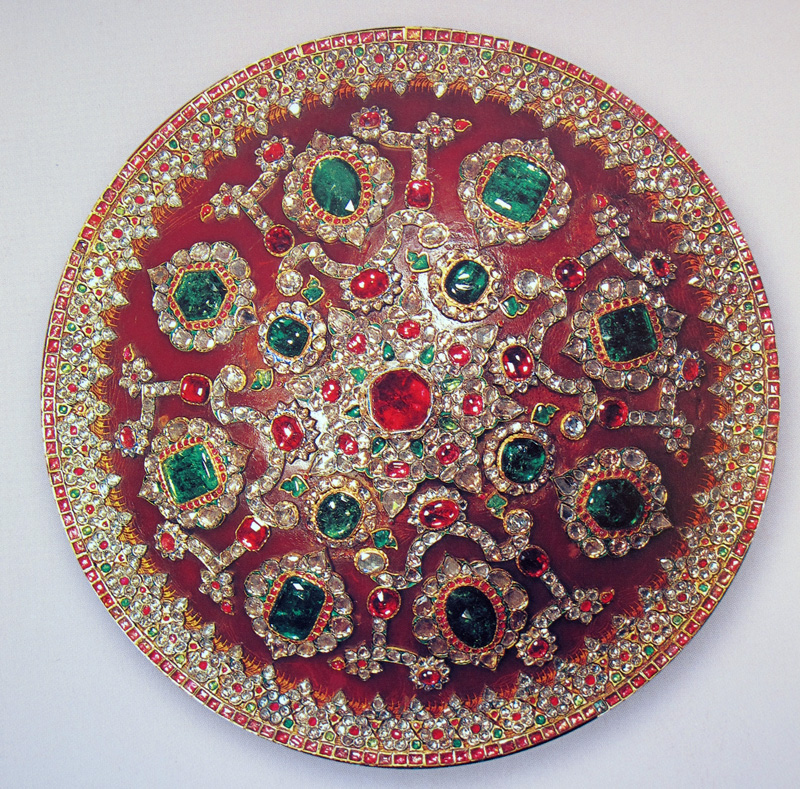
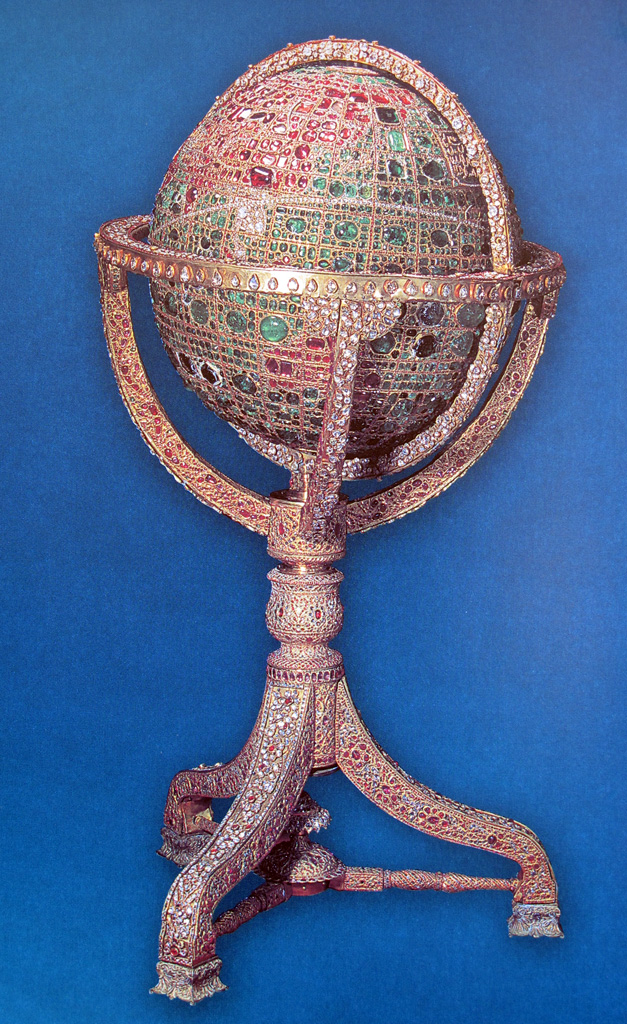


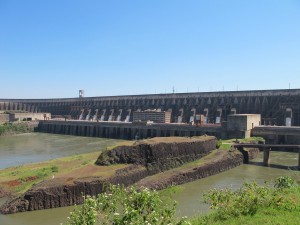
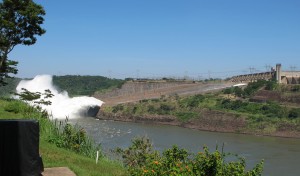
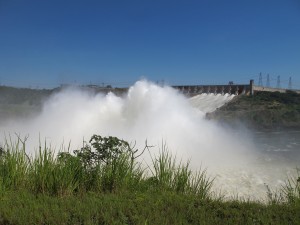
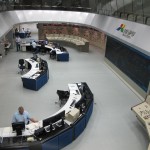
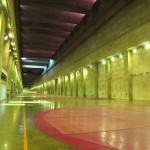
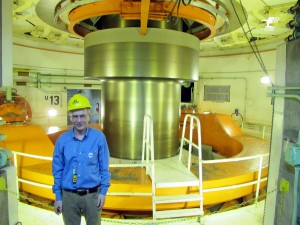
![Brest Fortress Entrance [Brest Fortress Entrance]](/photos/GoDaddy/Brest/minis/Entrance.jpg)
![Brest Honour Guard [Brest Honour Guard]](/photos/GoDaddy/Brest/minis/HonourGuard.jpg)
!["Thirst" ["Thirst"]](/photos/GoDaddy/Brest/minis/Thirst.jpg)
![Obelisk [Obelisk]](/photos/GoDaddy/Brest/minis/Obelisk.jpg)
